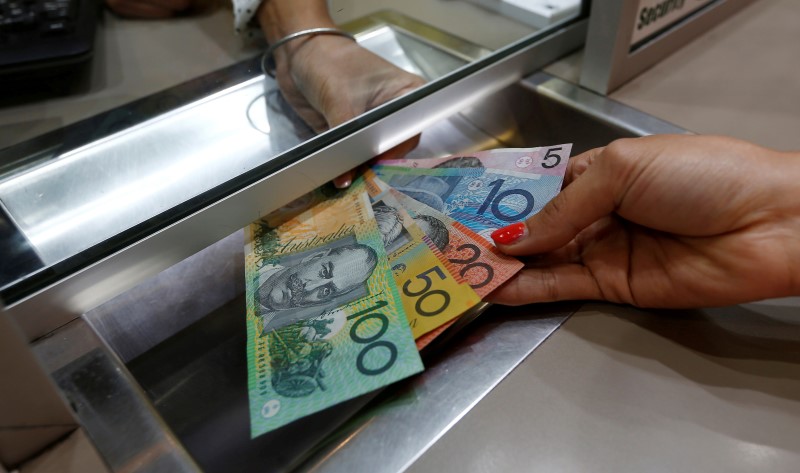Investing.com - The Aussie held gains in Asia on Tuesday after an RBA interest rate decision by the latest central bank held stead as expected at 1.50%.
AUD/USD rose 0.20% to 0.7961, while USD/JPY changed hands at 109.28, down 0.40%.
Earlier in Asia, Australia reported its current account came in at a surplus of A$9.6 billion, wider than the A$8.1 billion surplus seen in the second quarter. China's Caixin services PMI for August also jumped to 52.7, compared with a reading of 51.8 expected.
The U.S. dollar index, which measures the greenback’s strength against a trade-weighted basket of six major currencies, fell 0.14% to 92.44.
Last week, the dollar remained broadly lower against the other major currencies on Monday, as Friday's disappointing U.S. employment data continued to weigh and as fresh threats from North Korea dominated investors' attention.
Trading volumes were expected to remain light with U.S. markets closed for the Labor Day Holiday.
The greenback came under pressure after the U.S. Labor Department reported on Friday that the economy added 156,000 jobs in August from the prior month, while the unemployment rate ticked up to 4.4%.
Economists had expected 180,000 new jobs and an unemployment rate of 4.3%.
The report indicated that the Fed may be more reluctant to raise interest rates again before the end of the year.
The safe-haven yen and Swiss franc were higher, with USD/JPY down 0.62% at 109.58 and with USD/CHF retreating 0.96% to trade at 0.9555.
Risk sentiment waned after North Korea said on Sunday that it had conducted a test of a hydrogen bomb intended to be mounted on an intercontinental ballistic missile.
Pyongyang called the test a complete success, with a greater yield than previous tests and no adverse impact on the environment.
The news prompted U.S. to warn of a "massive" military response if it or its allies were threatened.
U.S. President Donald Trump also threatened to cut off trade with any country doing business with North Korea.
Investors also continued to follow developments in the U.S. oil market, as about 5.5% of the U.S. Gulf of Mexico's oil production, or 96,000 barrels of daily output, remained shut on Sunday after storm system Harvey made landfall in Texas more than a week ago.
